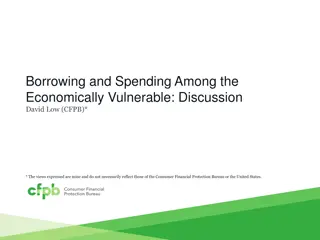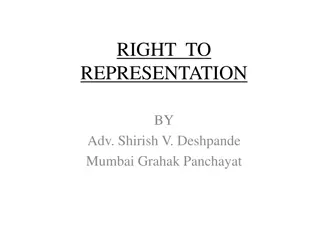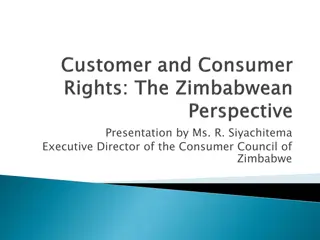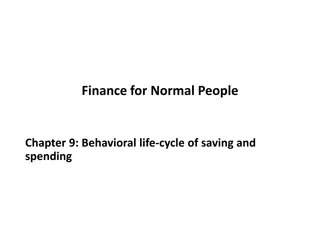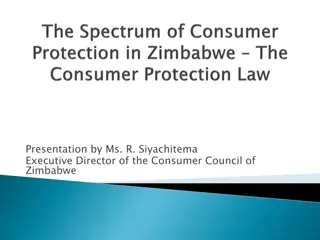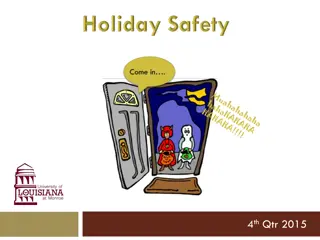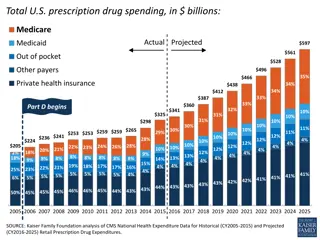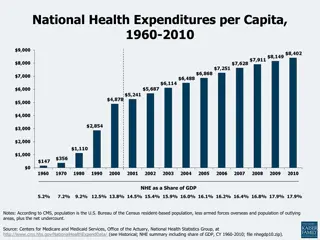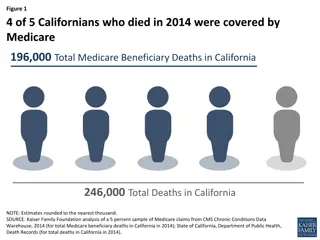Holiday Spending Insights: Consumer Trends & Impact
In an August 2020 survey by PowerReviews, consumer holiday spending intentions were analyzed, revealing regional variations, pandemic effects on shopping behaviors, Gen Z challenges, and the rise of streaming TV in holiday shopping. Discover key insights and trends shaping the upcoming holiday shopping season.
Uploaded on Feb 27, 2025 | 2 Views
Download Presentation

Please find below an Image/Link to download the presentation.
The content on the website is provided AS IS for your information and personal use only. It may not be sold, licensed, or shared on other websites without obtaining consent from the author.If you encounter any issues during the download, it is possible that the publisher has removed the file from their server.
You are allowed to download the files provided on this website for personal or commercial use, subject to the condition that they are used lawfully. All files are the property of their respective owners.
The content on the website is provided AS IS for your information and personal use only. It may not be sold, licensed, or shared on other websites without obtaining consent from the author.
E N D
Presentation Transcript
More Consumer Holiday Spending Insights In an August 2020 PowerReviews survey of more than 5,000 active shoppers who have opted in to offers and discounts from retailers, 19% of respondents said they would increase their 2020 holiday spending, 54% remain the same and 27% plan to spend less. Interestingly, by region, 21% of respondents living in the South said they would increase spending (the largest region), but 29% said they would spend less and tied with the West for the region with the most anticipated decrease in spending. The states where respondents said they would increase their spending the most were Arkansas 28%, Alabama 28% and Louisiana 27% while the states where spending will decrease the most were South Dakota 40%, Mississippi 39% and Wyoming 36%.
Pandemics Effect on Holiday Shopping In its August 2020 survey, SYKES, a multichannel demand generation and customer engagement services company, found, interestingly, 57.0% of consumers said most of their summer shopping was online, but 77.0% had shopped in-store for non-essential items. Of those surveyed, 76% said they were less likely to shop in a crowded mall, 77% wanted retailers to mandate customers to wear masks and 47.3% were more likely to shop in-store at retailers offering contactless payment options. According to the PowerReviews survey, a majority of respondents in all four US regions were concerned about shopping in stores during the holidays: Northeast 71%, South 71%, Midwest 66% and West 72%.
Gen Z Shopping May Be Stifled Although the PowerReviews survey cited in slide #2 found 38% of respondents 18 24 said they would increase their holiday spending (the largest by generation), it may be difficult since Gen Z s unemployment rate is 93% more than their older counterparts. Despite higher unemployment and disruption to their college education, 39% of the more than 1 million college- age students Gen Z Insights surveyed said they planned to spend $100 to $500 for their holiday shopping. Of the surveyed students, 60% said they would shop during Thanksgiving Weekend while 21% won t finish shopping until December. Their two biggest shopping categories were food 39% and tech 20% while 42% would be attracted to the best student discounts.
Streamers Are Holiday Shoppers Too With more people staying at home since the start of the pandemic, streaming TV content (CTV: connected TV, OTT: over-the-top TV) has increased 74% YOY, creating a specific market for holiday advertisers. An August 2020 survey from Adelphic, a subscription- based omnichannel demand-side platform found 17% of adults who subscribe to at least one streaming service would spend more, but 37% planned to spend less, a much larger gap than many other surveys. Similar to most other surveys, 55% of streamers said they would do most of their 2020 holiday shopping online, compared to 34% last year, with just 15% planning to shop in-store, compared to 32% last year, and 22% would shop both channels equally.
Shopping for Gifts Because of holiday shoppers reluctance to shop in crowded stores, gift cards are likely to become an optional gift. According to research from BizRateInsights.com, 15% of surveyed consumers said they will chose the gift-card option instead of their planned gifts. The consumer survey for Field Agent s 2020 Holiday Preview Report supports the BizRateInsights.com research, as the women surveyed said gift cards (or cash) would be the gift they would most like to receive with a value of less than $250. The Field Agent survey found Christmas greeting cards will remain popular, as 38% said they were completely likely, 19% very likely and 15% moderately likely to purchase at least one Christmas greeting card.
Celebrating with Food and Drink With many Americans saying they will host fewer holiday parties, their grocery shopping plans are important. According to the Field Agent survey, Walmart will be the big winner as 47% of consumers said that is where they will spend most of their holiday grocery dollars. Clearly, Coca-Cola has done a very good job creating a strong connection with the holidays, as 45% of consumers told Field Agent it was the #1 beverage they associate with Christmas. Swiss Miss was a distant second at 14% and Pepsi third at 10%. Of the consumers Field Agent surveyed, 40% said they were completely likely and 17% very likely to consume alcoholic beverages Christmas Eve and/or Day and wine will be the preferred beverage of a majority, or 58%, with beer/craft beer second at 46%.
Advertising Strategies Local advertisers may want to apportion more of their holiday advertising budgets to promote gift cards as a safe alternative for consumers reluctant to shop in-store. Target men and adult children, as women indicate they would most like to receive a gift card. Another niche local advertisers may want to target during the holidays is self-gifting as consumers indicate they will spend more on themselves as they spend less for friends and are concerned about having what they need for a potential pandemic winter. Local advertisers with adequate parking lots may want to follow Walmart s lead and promote temporary drive-in theaters and other holiday-oriented activities that can be enjoyed from a vehicle.
New Media Strategies With ratings/reviews from other purchases the #2 factor influencing holiday shoppers purchases, local advertisers will want to ask their customers to provide ratings and reviews, and incentivize them to generate a maximum number. Local advertisers can craft specific social media, mobile marketing and text messaging to attract the youngest adults (Gen Z) who are disproportionally unemployed during the pandemic. Students discounts are likely to generate more spending. Restaurants and bars offering takeout/delivery service can use social media to promote special food items, including complete holiday dinners for individuals and families that don t want to cook. Bars can use some social media posts to deter over-consumption.



![[✔PDF✔⚡] ✔DOWNLOAD✔ Blank Recipe Book For Holiday Season: My Holiday Recipe](/thumb/68037/pdf-download-blank-recipe-book-for-holiday-season-my-holiday-recipe.jpg)
